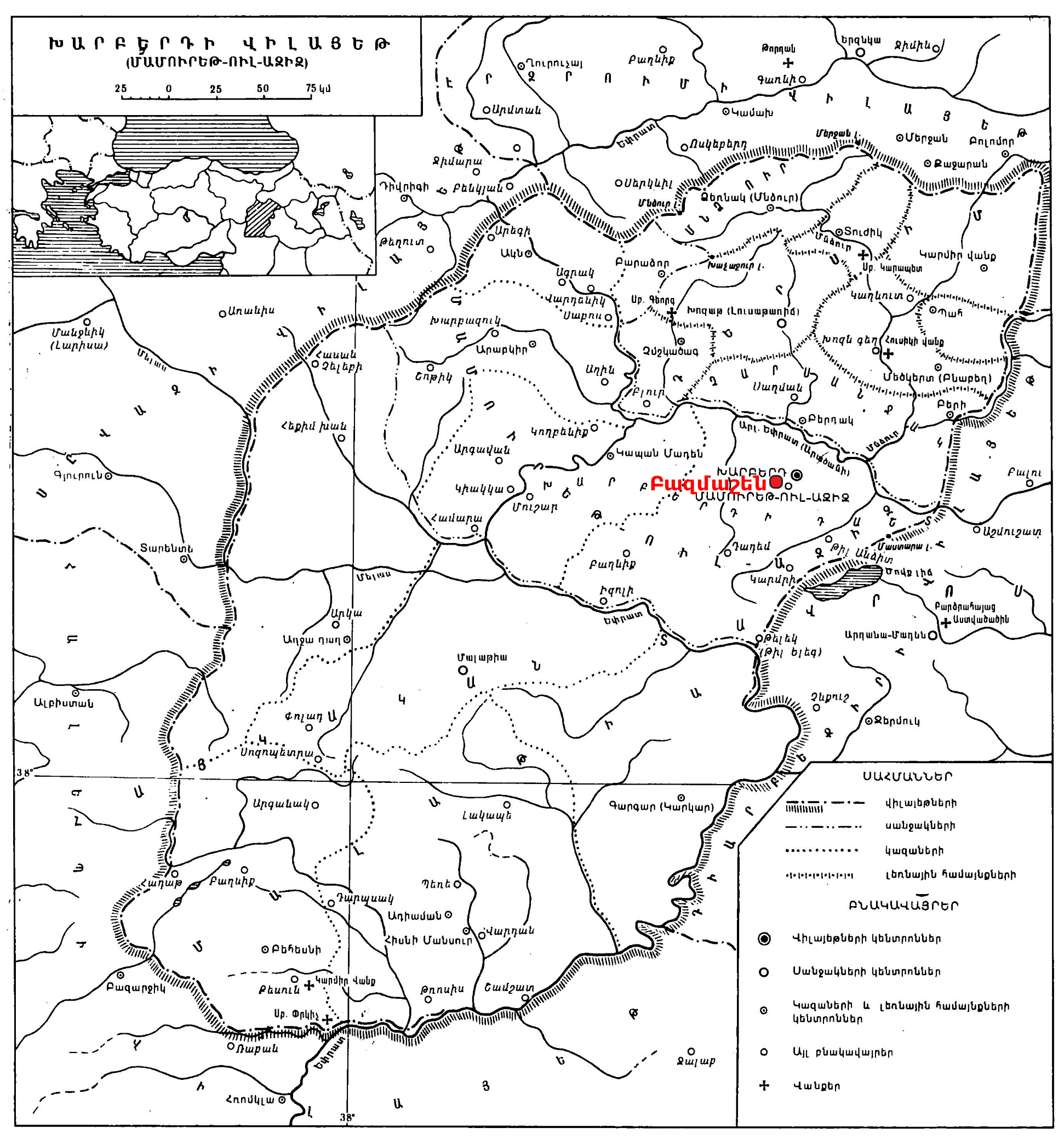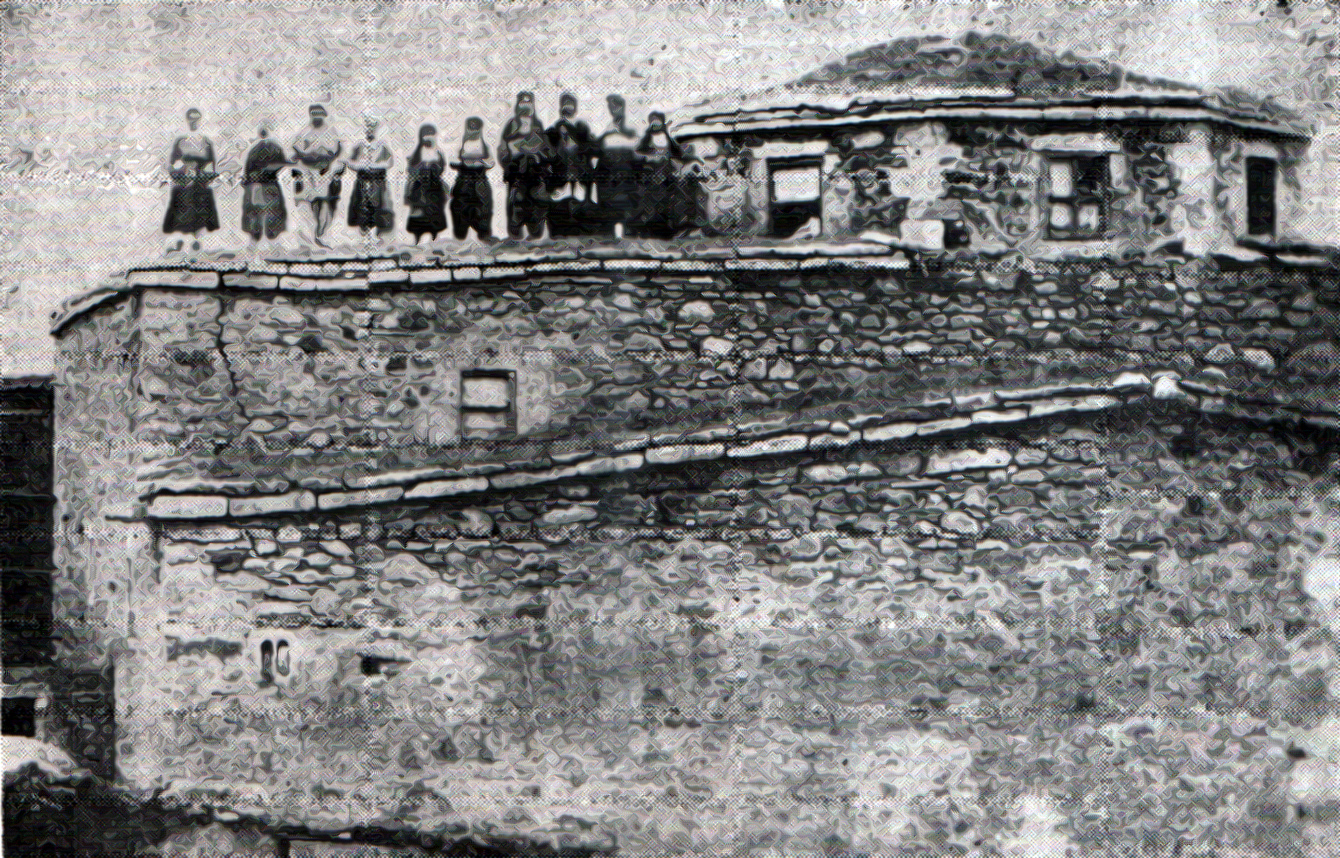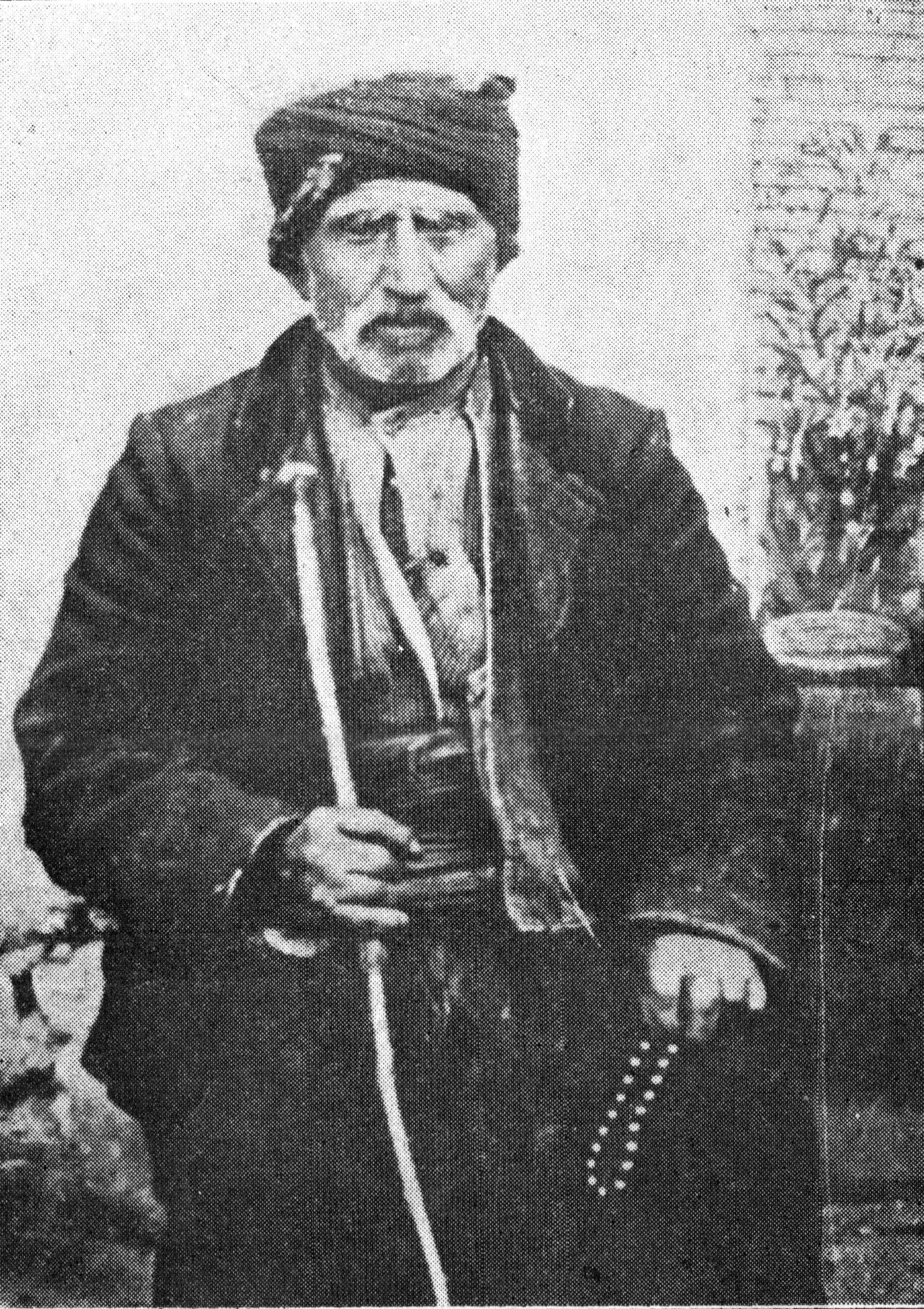
The village Bazmashen was located at Kharberd district of Kharberd province of Western Armenia, eight km to west from Kharberd town. In ancient times the village was called Bazman.
According to tradition, it was founded by seven large Armenian families in 1165. The village has become more populated over the centuries. Bazmashen had around 6,000 Armenian population on the eve of the Armenian genocide. The products of shoemakers and carpenters of Bazmashen were sold in different towns of the Ottoman Empire. There was an oil-mill and the manufactory of cutting and reeling cigarette papers in the village.
Since 1887 the Armenians migration from Bazmashen to the US was increasing. American Armenian migrants established Bazmashen educational foundation which dealt with the education of youth of the native village. The foundation provided a great help to compatriots, who were injured from the Hamidian massacre in 1895, and built a new school for 300 pupils.
After the beginning of the Armenian genocide on 28 June 1915 the Turkish authorities gave the command of the population of Bazmashen to leave to the deserts of Syria. Many families were helpless, their husbands and children were enlisted or imprisoned. It was impossible to pass the road by foot walk with two-three, four minor children. Tired children were asked their mothers to embrace them, and women having no other way to give strength to walk, said
"Son, if you do not walk, the Turk will kill you."
Only a few young people from Bazmashen did not submit to the command of deportation. They hid in the neighborhood of the village, but were later revealed and killed by the Turkish and the Kurdish paramilitary groups.
The population of Bazmashen in the way to desert was joined with the 30,000 caravan, in which Armenians from other regions of Kharberd province were gathered. At the bank of Euphrates (near the Kyomurkhan, about 50 km to the south from Bazmashen) Turkish soldiers separated men over the age of 12 from women and children. Shortly after the departure of the caravan, all men were slaughtered and thrown into the river.
The next refuge of the caravan was Malatia. One of the eyewitnesses describes the hardships road leading to the death as follows:
"Those young and frisky women, who were often more powerful than their men, became weakened and had no ability to walk. They could not even take care of their children, they were forced to abandon their wealth on the road and leave. And what a terrible experience for a mother to be separated from her beloved child, but they had no other way. Mother, who would like to give her life for her child, could not do even that, she might take her child and walk with the group. That was the command of the Turkish soldier. Sometimes, mother seated her three-four years old kid down under the tree and said "You stay here, I will bring you water". And she left for not coming back anymore. Mother had known that she might not come back, but she did not have even a slice of bread for giving a kid and not being able even to cry she was leaving her son never to see her child again".
Many people were dying of hunger and thirst.
"Sometimes, when they passed through the water, no one was allowed to drink even a drop of water and to quench his thirsty".
The exiles were being attacked by the mobs of Turkish and Kurdish while caravan was passing near some towns and villages. Often the rapes were happening... Many girls and young wives were taken away to the Turkish and Kurdish homes, where were putting them to do home slavish works. Many women "For the sake of their honor did not want to surrender and committed suicide by jumping into the water".
Women and children were walking under the scorching sun.
"The bodies of many people were burned under the sun and caused wounds. By the directive of the government such people were gathering and burning in order to prevent infectious diseases".
After the settlement of Urfa the caravan reached sparsely populated desert region. One of the eyewitness tells the following:
"Now the deportees were taken away them from the villages and towns that they could not find any food. If they saw a dead animal, they were snatching the pieces of it from each other. After eating the meat, they kept the bones carefully in order to eat them on the way. Often they turned bones into the flour by beating and eat it"...
Barely 155 people from 6,000 displaced Armenians from the village of Bazmashen managed to reach Deir ez-Zor concentration camp. In 1918, after the armistice in the deserts of Asorik, 25 people from Bazmashen maintained their scattered existence in the regions of Baghdad and Urfa. The task of their collecting and transportation to native settlement was assumed by the American-Armenian young people from Bazmashen left to the Middle Eastern front as a volunteers of US Army. The settlement had an Armenian population of around 140 people together with the people returned to Bazmashen after the war and with about 80 hostage people from Bazmashen in the surrounding Turkish and Kurdish villages. The village was in ruins, Armenians property was confiscated by the government or taken by influential Kurds and Turks. The returned people of Bazmashen despite all the hardships and pressures were able to stay in their native settlement until 1929, when the Kemalist government forced them to leave their properties and to forever depart to other countries: Syria, France, USA.
Turkish authorities renamed Bazmashen as Sarichubuk. According to the census, in 2012, the population of this settlement was 668 people.
In preparing the review we make use of work of Abdal Poghosyan dedicated to the history of Bazmashen (Poghosyan Abdal, the extensive history of Bazmashen. Until the last days of his establishment, Poston, published in Paykar, 1930 (in Armenian)) and from other sources.
Robert Tatoyan
 The village Bazmashen of the Kharberd province
The village Bazmashen of the Kharberd province
 Armenian church of village Bazmashen
Armenian church of village Bazmashen
 Abdal Shahbazyan from village Bazmashen
Abdal Shahbazyan from village Bazmashen





